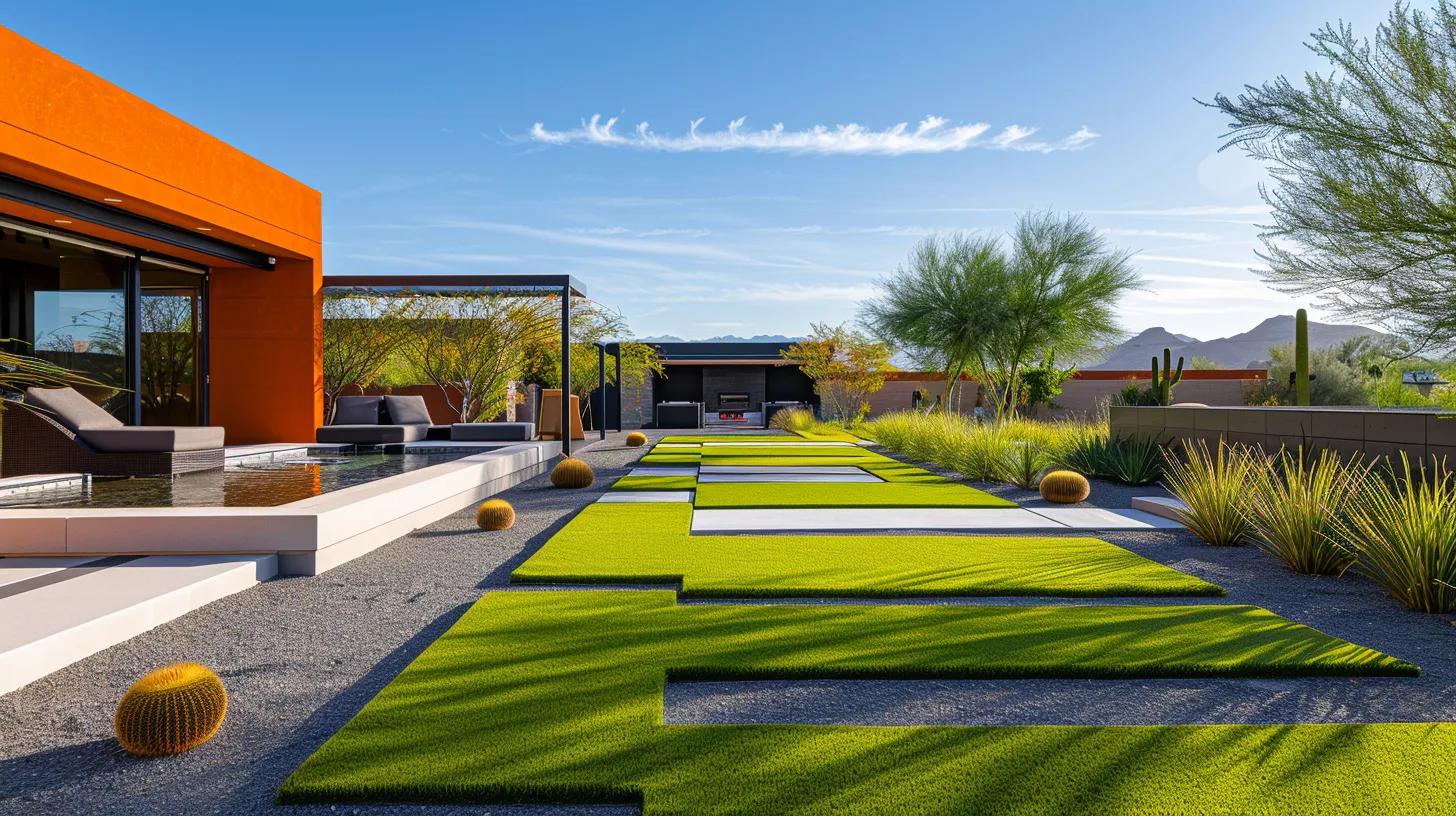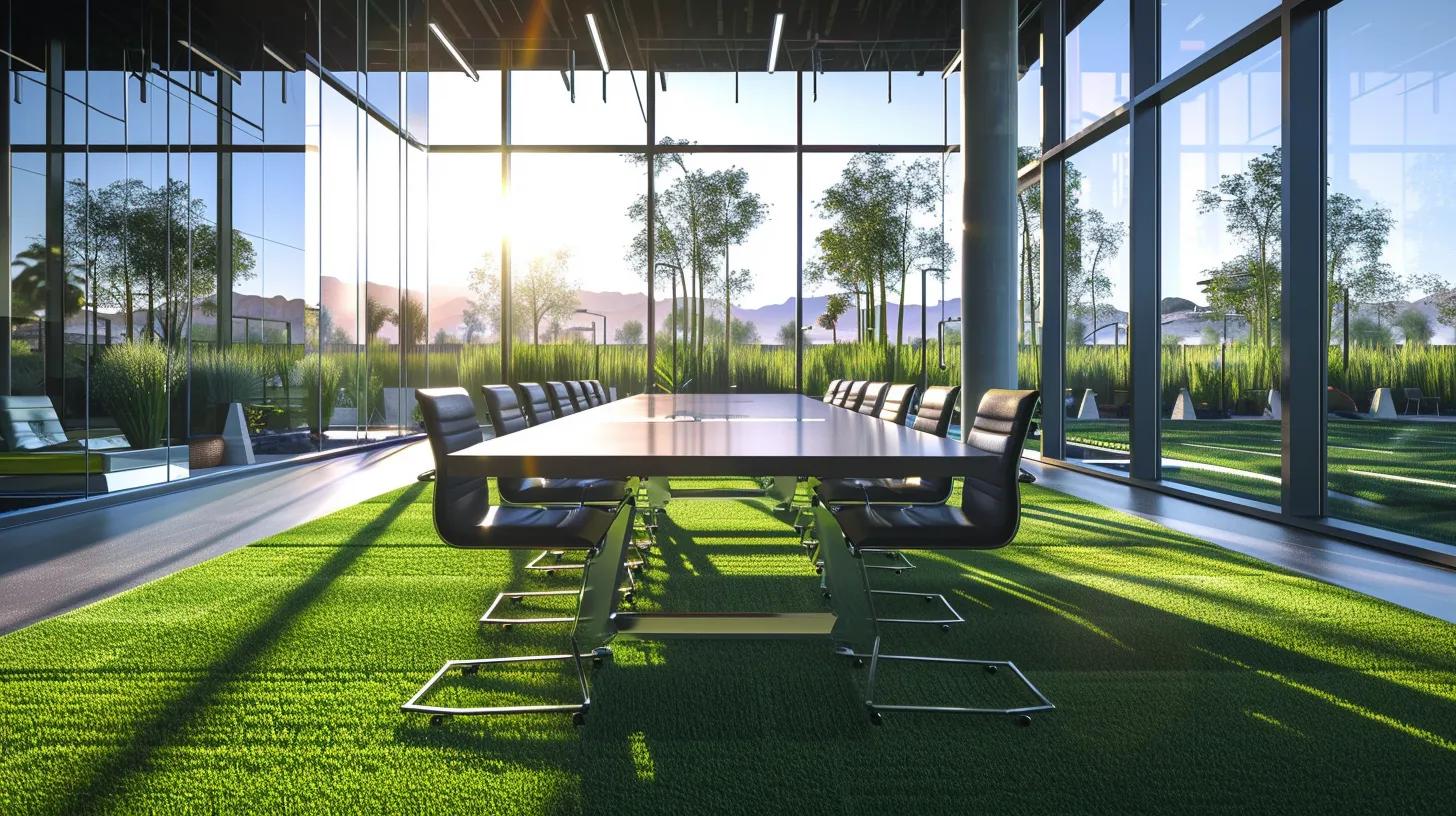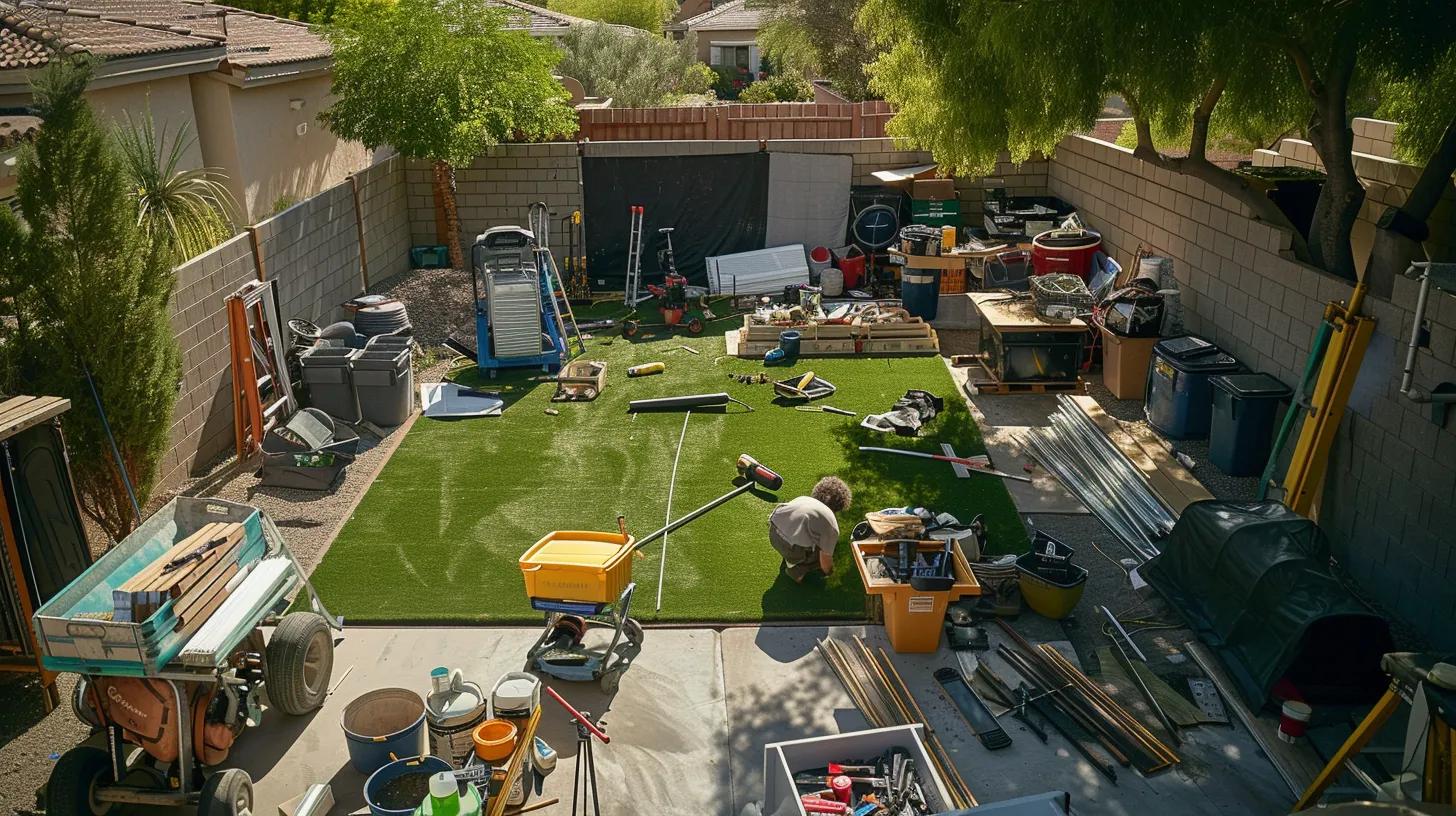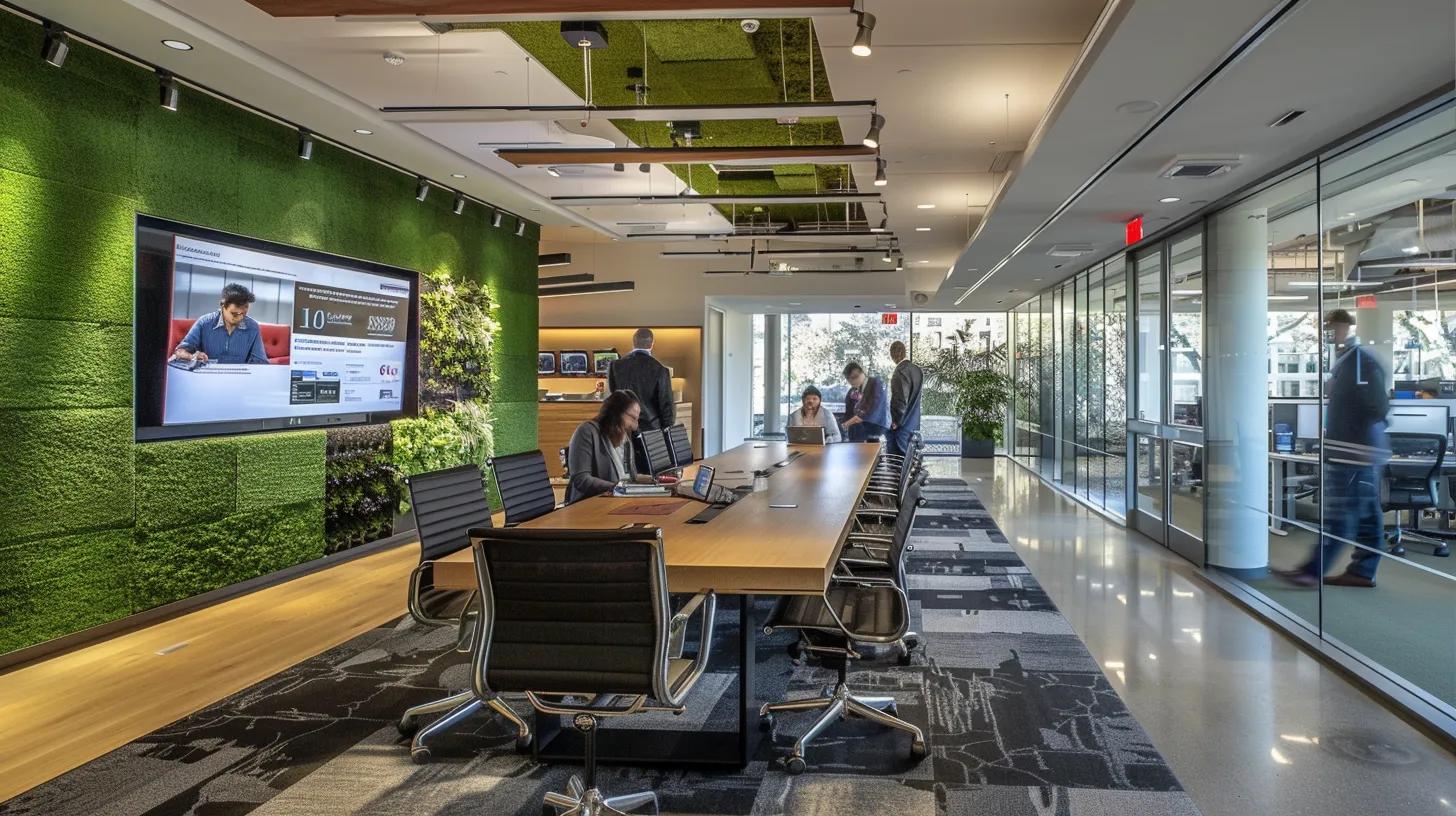
Artificial grass can transform your backyard into a low-maintenance, water-saving, and visually stunning oasis that defies the harsh Arizona climate, making it an ideal residential turf option. With over ten years in the artificial turf business at arTURFicial wholesale, I’ve seen how synthetic turf changes the way homeowners in Phoenix, Scottsdale, and beyond enjoy their outdoor spaces in our service area. In this article, I explain the advantages of synthetic turf, offer advice on selecting top-performing products, review the best varieties for Arizona backyards, and provide installation and care tips—all while keeping your budget in mind. To learn more about our journey, check out our about-us page. Whether you desire a pet-friendly area, a safe playground for kids, or a stylish putting-green-turf, you’ll find plenty of valuable tips here. For further inquiries, please contact-us.
Our journey covers the key benefits of synthetic turf, guidance on product selection for our unique climate, and a step-by-step approach to installation and maintenance. If you’re a homeowner in Arizona considering artificial grass, read on to discover how this innovative solution can add lasting value and beauty to your property.
Synthetic turf offers many benefits in Arizona. Unlike natural grass, which turns brown and patchy under scorching heat and low rainfall, artificial turf stays green all year round—regardless of weather changes. understanding the benefits of turf vs natural grass for greens.
Engineered to resemble natural grass, synthetic turf remains lush even when natural vegetation struggles in the desert heat. Advances in color retention and fiber design ensure your lawn looks vibrant and fresh every day.
Traditional lawns require intensive watering, which not only increases your water bill but also strains local resources. By switching to synthetic turf, you save thousands of gallons of water per year, lowering both costs and environmental impact. understanding the benefits of turf.
With synthetic turf, forget mowing, watering, fertilizing, or pesticide applications. Its durable design withstands extreme climates with minimal upkeep, freeing up your time and reducing overall maintenance costs.
Pets can wreak havoc on natural grass, but synthetic turf resists damage from digging, chewing, and waste. Its non-toxic, easy-to-clean surface makes it ideal for busy families with pets, ensuring a safe and neat play area.
A pristine, green lawn enhances curb appeal and can boost property value. Synthetic turf provides a consistent, attractive look with minimal upkeep, offering a modern and sophisticated appearance even in harsh desert conditions.

Choosing artificial grass for Arizona requires focusing on products that can handle high temperatures, intense sun, and occasional monsoon rains. Here are the key factors to consider:
Select turf made of durable materials like polyethylene that dissipate heat efficiently. Products designed for desert climates often include engineered fibers that remain cool even on the hottest days, ensuring comfort for both family and pets.
Quality synthetic turf features UV inhibitors and special coatings to guard against the sun’s harsh rays. Look for products that offer warranties against fading, ensuring your lawn stays vibrant over time.
Even in Arizona, sudden heavy rains can occur. Modern turf products include perforated backings and drainage channels to quickly move water away, preventing puddles, mold, and mildew formation.
Blade density affects the fullness of your lawn, while pile height determines its texture. Dense, low-pile turf works well for high-traffic areas, and a medium pile height offers a natural, inviting look for residential settings.
Materials like polyethylene, polypropylene, and nylon are common in turf products. Polyethylene is often preferred in Arizona due to its balance of durability, softness, and color retention, ensuring your lawn continues to look great for years. the benefits of turf vs natural grass for greens.
Several synthetic grass varieties perform well in Arizona. Below is an overview of the main types, highlighting their benefits and best applications:
Nylon turf is extremely durable and withstands heavy use. It’s ideal for sports fields, playgrounds, and busy family yards. Although it has a higher cost, its longevity justifies the investment.
Polypropylene turf provides a softer feel and natural look, making it an excellent choice for children’s play areas. It is less expensive, though not as durable as nylon under heavy traffic.
Offering the best compromise between aesthetics and durability, polyethylene turf replicates the look of natural grass while withstanding extreme sun and heat. It is widely used in quality residential applications.
Blended turf combines the strengths of different materials—for example, polyethylene for a realistic grass look and nylon for durability. This hybrid option works in a variety of settings and usage patterns.
For pet owners, look for turf with high fiber density and a durable backing that resists staining and odor buildup. Some products even include antimicrobial treatments to reduce bacteria and odors, ensuring a clean, pet-friendly surface.

Proper preparation is key to a successful turf installation. Follow these steps for a smooth project:
Remove existing grass, debris, or obstacles from the installation area. Leveling the ground prevents wrinkles and ensures the turf lays smoothly. Consider hiring a professional if needed.
Lay down a layer of crushed rock or gravel followed by sand. This base supports the turf and improves drainage, crucial in managing occasional Arizona monsoon rains.
Ensure your base is slightly sloped or use a drainage mat to allow water to flow away from the turf. Effective drainage prevents water pooling and protects your lawn from damage.
Carefully measure the area, accounting for any irregular shapes. Ordering a little extra can cover cutting errors and future repairs.
If you opt for a DIY installation, create a detailed plan. Gather all necessary materials and tools, and follow safety protocols. Professional consultation is advisable if you’re uncertain about any step.
Maintaining synthetic turf is simple compared to natural grass, but regular care ensures longevity and a fresh appearance.
Sweep your turf weekly with a stiff broom or low-power blower. For spills or stubborn stains, a gentle water rinse with mild soap is sufficient. Avoid harsh chemicals.
For pet owners, remove solid waste promptly using a pooper scooper, then hose the area down. Many turfs are designed with antimicrobial properties to reduce odors and bacteria.
To combat heat buildup, consider using a light-colored or reflective underlay. Light watering during the hottest part of the day and adding shade through trees or pergolas can also help keep the turf cool.
Over time, the turf may flatten from use. Periodic brushing with a power broom lifts the fibers and preserves the natural look of your lawn. A monthly brief session should suffice.
In the monsoon season, ensure drainage systems function properly, and in winter, a light rinse can remove accumulated dust. Regular seasonal checks prevent minor issues from becoming major problems.

Though the initial cost of artificial turf is higher, long-term savings make it a smart investment by reducing water, fertilizer, and maintenance expenses.
Quality turf typically ranges from $5 to $15 per square foot, with premium options offering enhanced UV protection and heat resistance. Consider warranty and durability when comparing costs.
Expenses include yard size, installation complexity, and the type of turf selected. Additional costs may encompass base preparation, professional installation fees, and custom features like drainage or edging.
While DIY can lower labor costs, professional installation delivers precision and includes warranties. Many homeowners find the extra investment worthwhile for long-term durability.
Over time, savings from reduced water bills and maintenance add up, and a pristine artificial lawn can boost your property value, recouping the initial costs within a few years.
If upfront costs are a concern, explore financing options. Many companies, including ArTURFicial Wholesale, offer payment plans or home improvement loans to ease the expense.
| Expense Category | Typical Cost Range | Key Considerations | Long-Term Savings |
|---|---|---|---|
| Material (per sq.ft.) | $5 – $15 | Quality, UV protection, heat resistance | Durability reduces need for replacement |
| Base Preparation | $1 – $3 per sq.ft. | Labor, disposal, leveling work | Enhances drainage longevity |
| Professional Installation | $3 – $7 per sq.ft. | Expertise, warranty, precision | Fewer maintenance issues |
| Additional Features | $500 – $2000 total | Custom edging, drainage systems | Better overall performance |
| DIY vs. Professional | Varies (up to 20%) | Savings on labor vs. risk of errors | Professional work lasts longer |
Obtain detailed quotes from local providers to plan your budget accurately.
Choosing the right installer ensures your synthetic lawn is installed correctly for maximum longevity and performance.
Look for installers with extensive experience, strong customer reviews, and proper licensing and insurance. Recommendations from friends or local groups can also be useful.
Ask about previous projects, installation timelines, and how the company handles issues like drainage or uneven ground. Written estimates and timelines help evaluate professionalism.
Verify licenses and insurance to ensure you’re working with a reputable company. Read local reviews and, if possible, contact former clients for feedback.
Compare multiple quotes by looking at material quality, experience, and warranty details. Sometimes a slightly higher quote reflects superior workmanship and support.
Choose an installer offering robust warranty coverage on both materials and labor. A comprehensive warranty covers fiber separation, discoloration, and degradation over time. installation services
Q: How does synthetic turf maintain its green appearance in the harsh Arizona climate? A: Synthetic turf uses UV inhibitors and advanced fiber technology to resist fading, maintaining a vibrant, green look all year round despite high temperatures and low rainfall.
Q: What maintenance does artificial grass require compared to natural grass? A: It requires minimal upkeep—regular sweeping or light power blowing and occasional rinsing are enough. There’s no need for mowing, watering, or fertilizing.
Q: Is synthetic turf safe and comfortable for children and pets? A: Yes. It is non-toxic, cushioned, and designed with antimicrobial treatments, making it safe and comfortable for both children and pets.
Q: How does the cost of artificial grass compare over time with traditional lawns? A: Although synthetic turf has a higher upfront cost, long-term savings from reduced water, fertilizer, and maintenance expenses quickly offset the initial investment.
Q: Can I install artificial grass myself or should I hire professionals? A: DIY installation is possible and may save money, but professional installers ensure precision, proper drainage, and include warranties, often providing better long-term results.
Q: How long does artificial turf typically last in Arizona? A: High-quality synthetic turf can last from 15 to 25 years with proper care, depending on materials, installation quality, and regular maintenance.
Q: Are there financing options available for synthetic turf installations? A: Yes, many companies offer financing options or home improvement loans to help manage the upfront costs of installation.
By considering these key factors—from advantages and product selection to installation and maintenance—you can create a beautiful, durable, and cost-effective artificial lawn that withstands Arizona’s challenging weather. At ArTURFicial Wholesale, we pride ourselves on delivering high-quality products and services, ensuring your backyard remains a valuable long-term investment. Enjoy a lush, green yard all year round without the hassles of natural grass maintenance.
heat, drainage, fiber, best artificial grass for arizona heat, lawn, environmentally friendly, extreme weather, artificial turf, climate, water, landscape, nylon, desert, polyethylene, polypropylene, sunlight, desert climate, pet, pavers, antimicrobial, sand, maintenance, drought, flood, longevity, pest, sod, mower, irrigation, zoysia, soil, fertilizer, leaf, tree, shade tolerance, plant, green, seed, lawn mower, yard, root, artificial grass installation, ideal, dense, contractors, lawn care, foot, rain, shade, garden, humidity, drought tolerance, sustainability, species, weed control, wear, barefoot, color, pesticide, soil ph, elevation, oasis, pergola, warranty, best artificial turf for arizona, customer service, hardscape, artificial turf installation, turf installation, carbon footprint, investment, pest control, water conservation, monsoon, aesthetics, budget, wear and tear, carbon, patio, cost, thatching
best artificial grass for arizona heat, arizona turf, best artificial turf for arizona, best turf for arizona, best residential artificial turf, best artificial grass arizona, turf grass arizona, arizona artificial lawns, heat resistant turf arizona